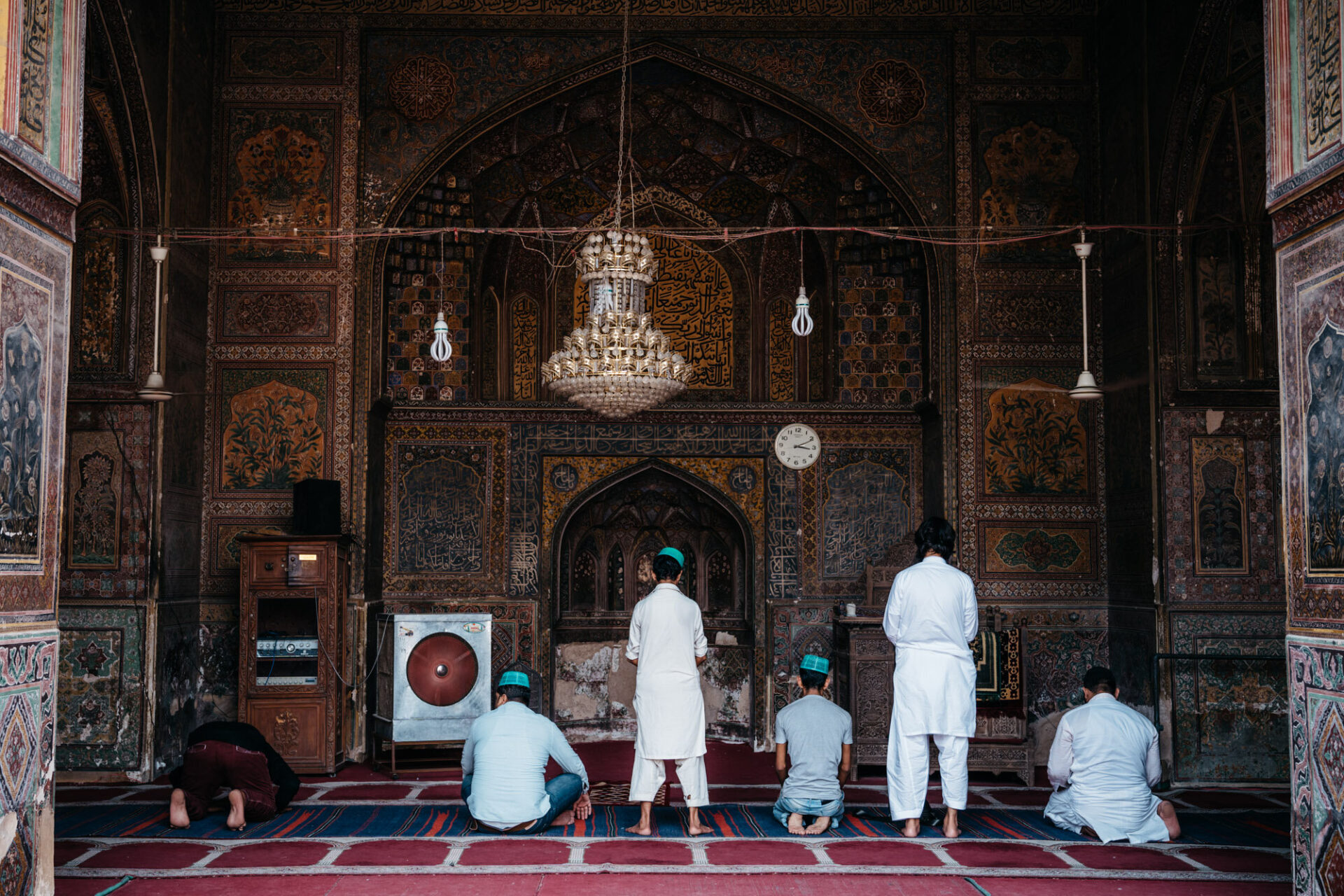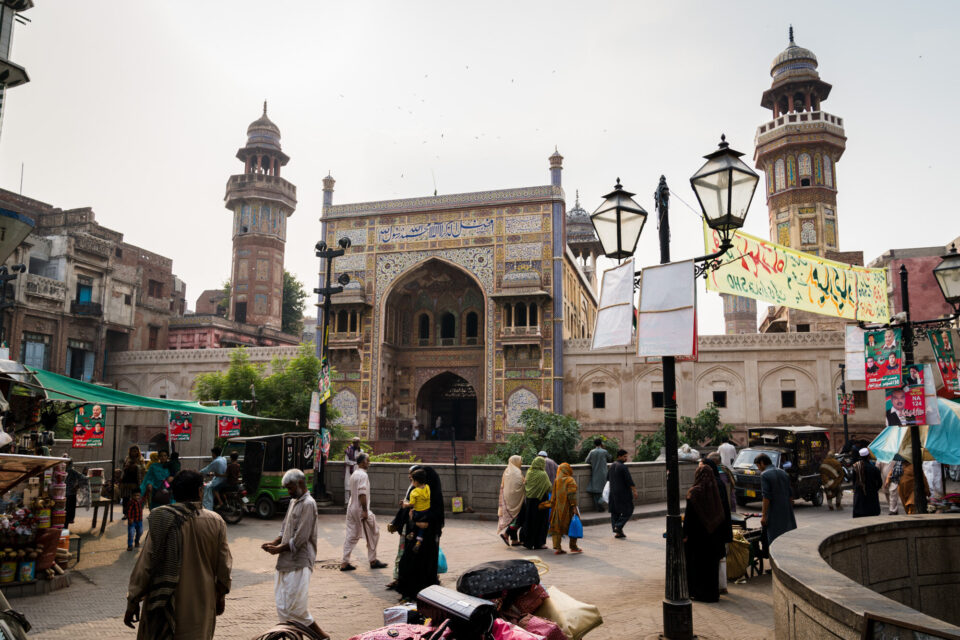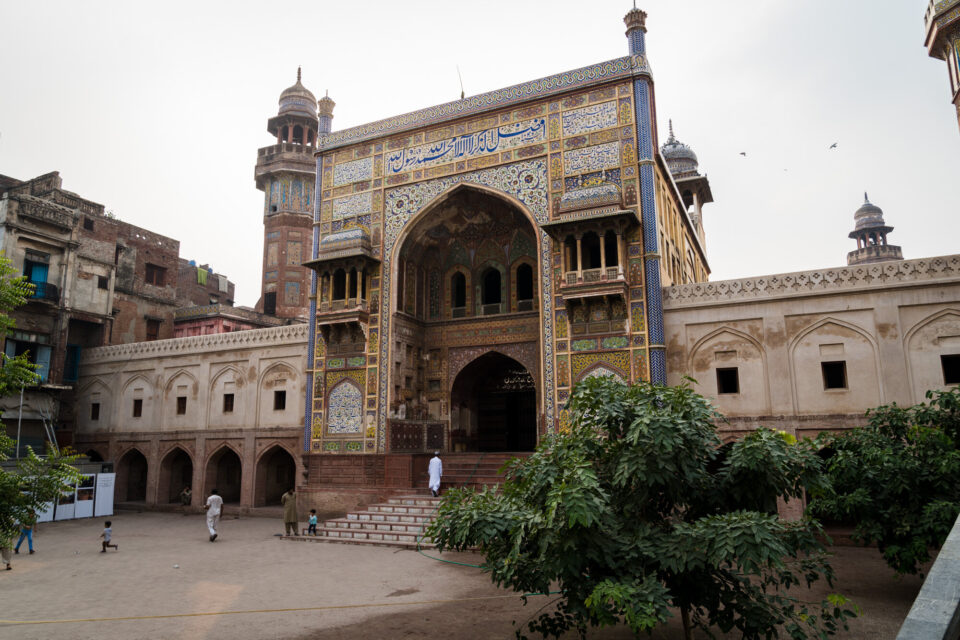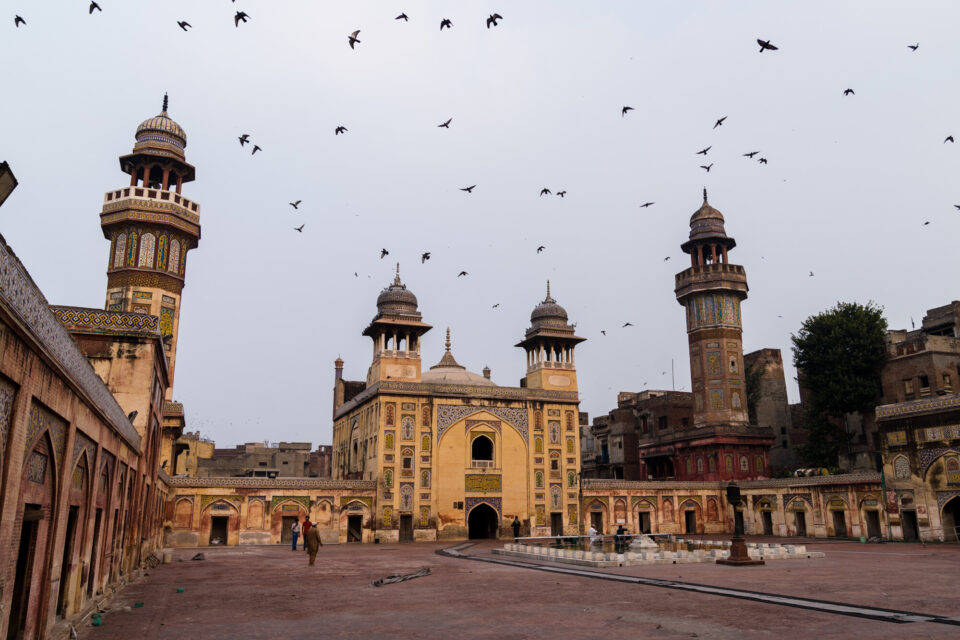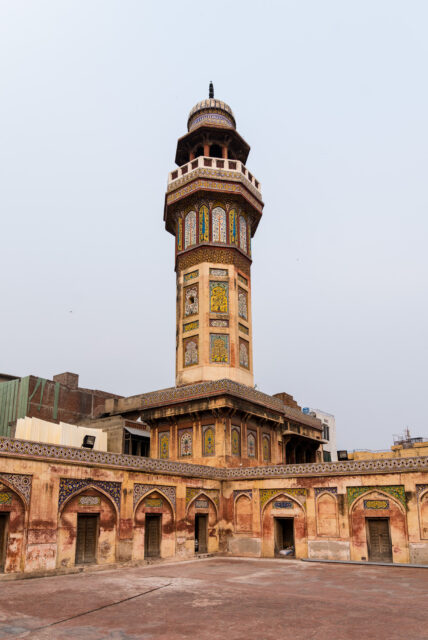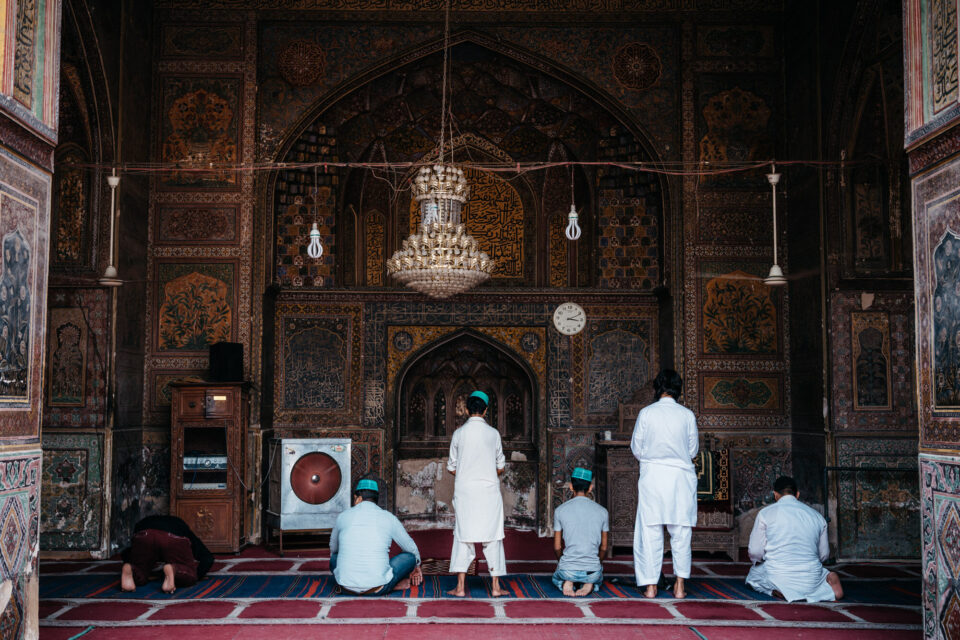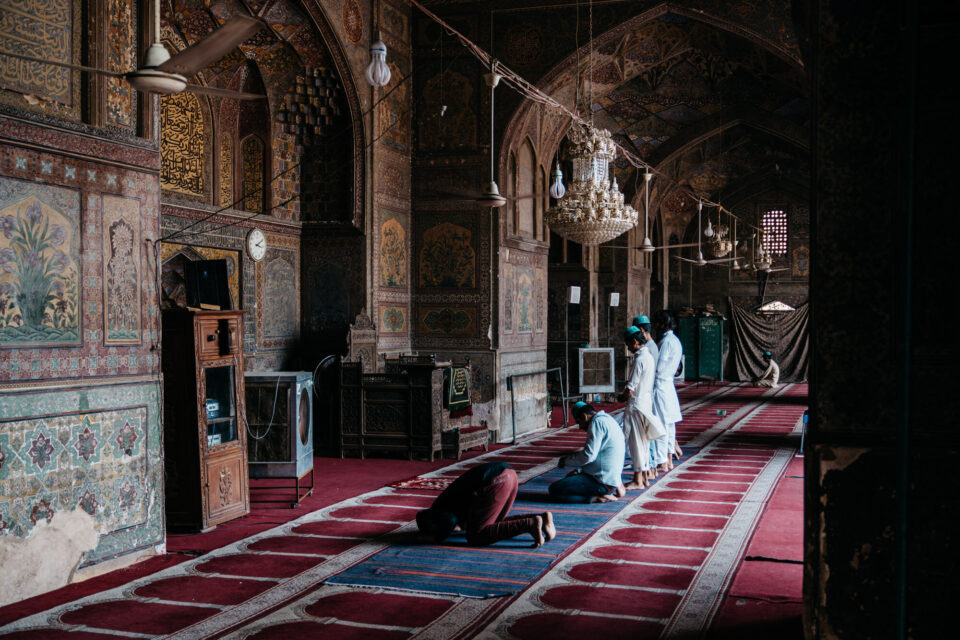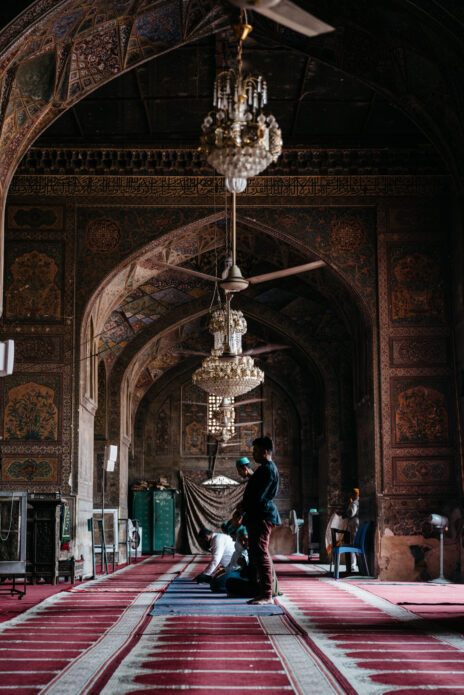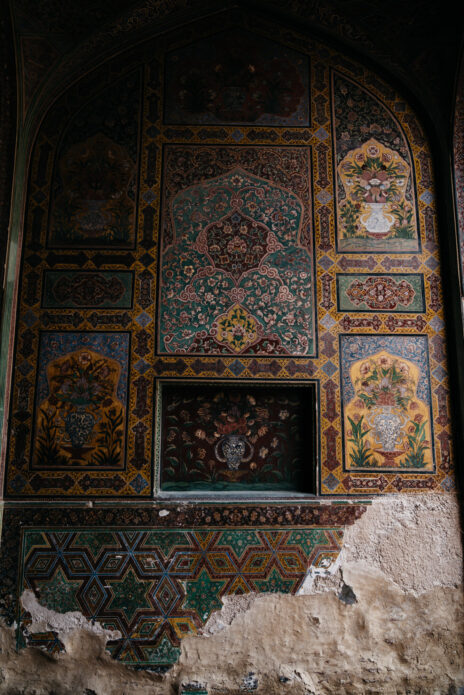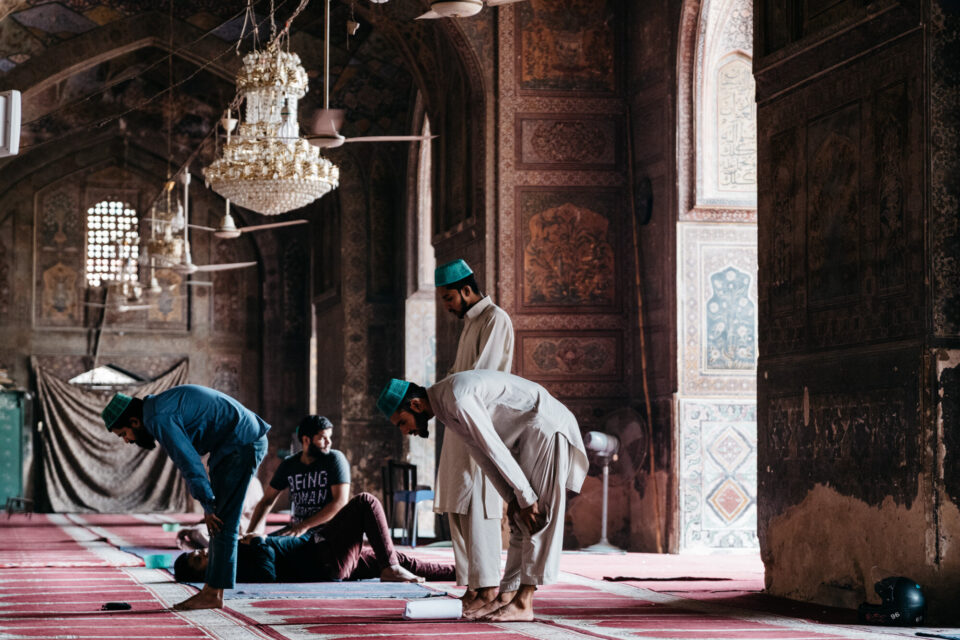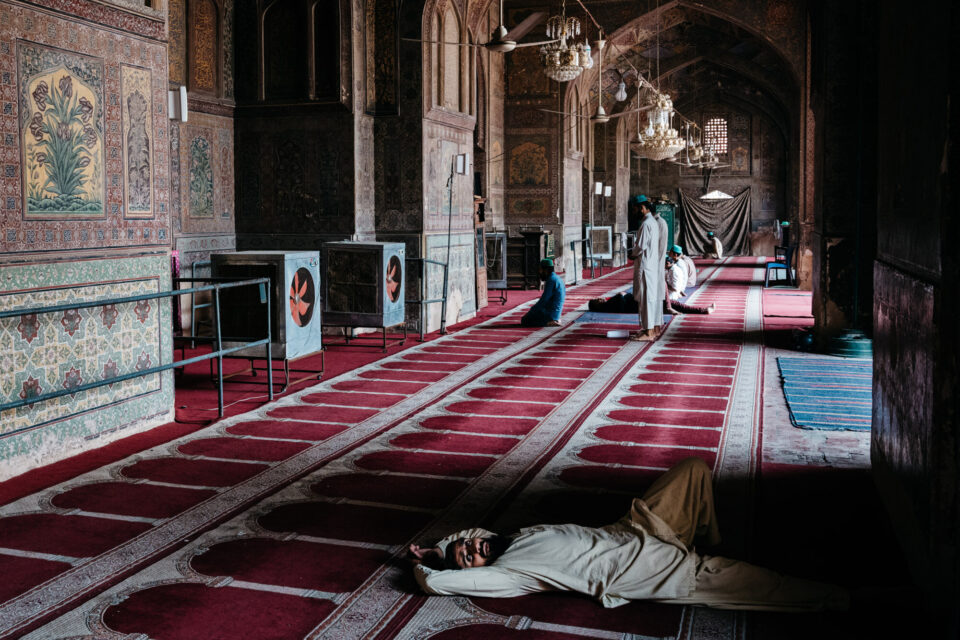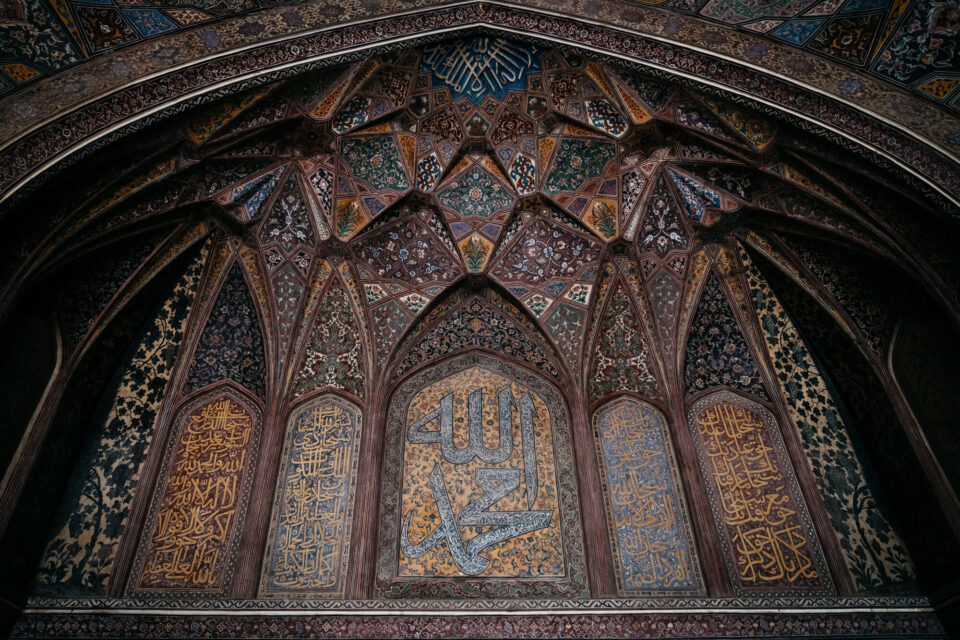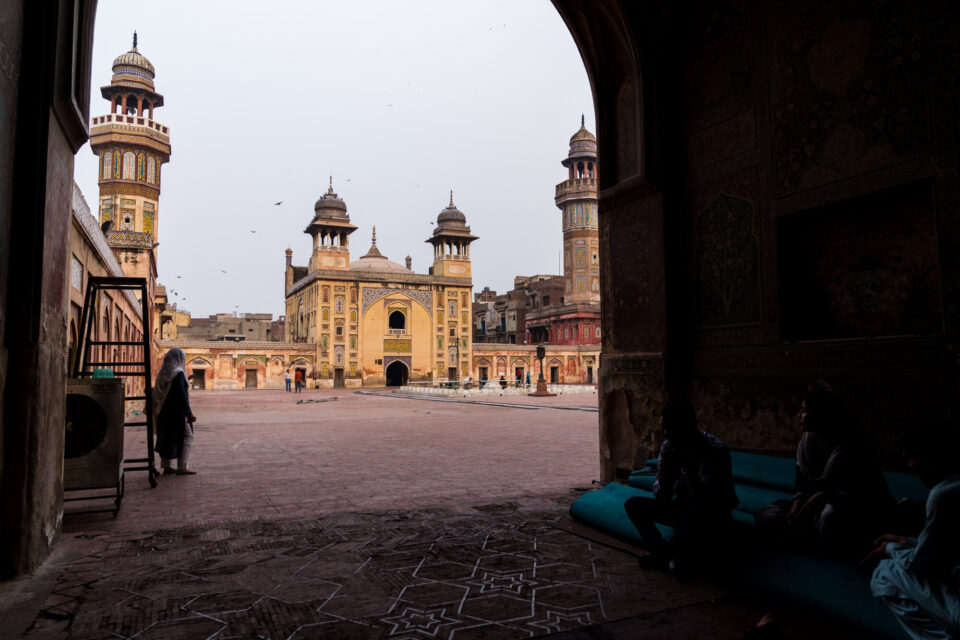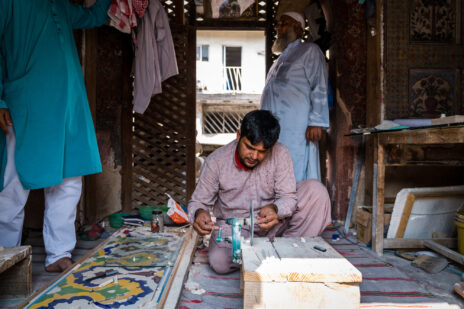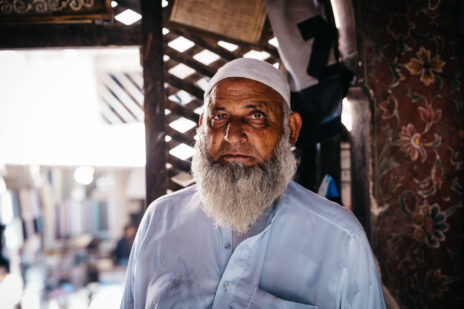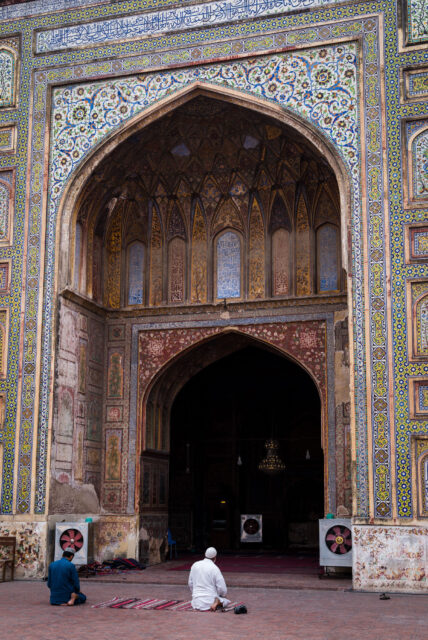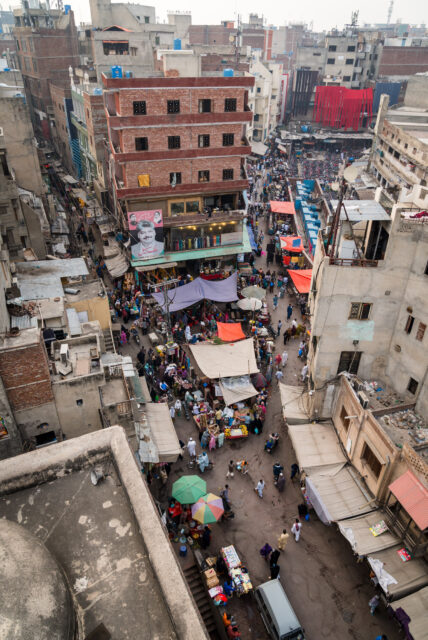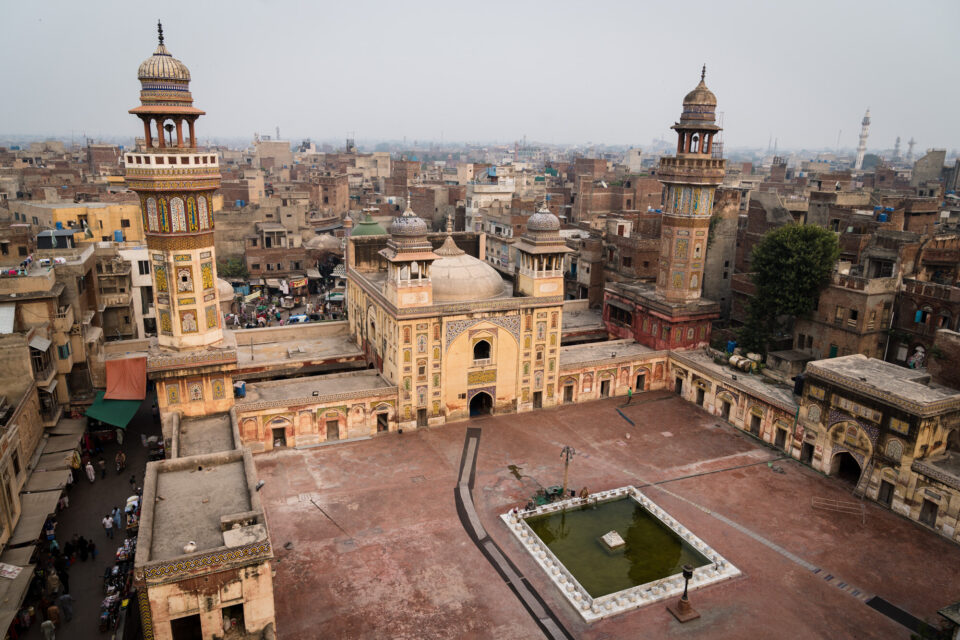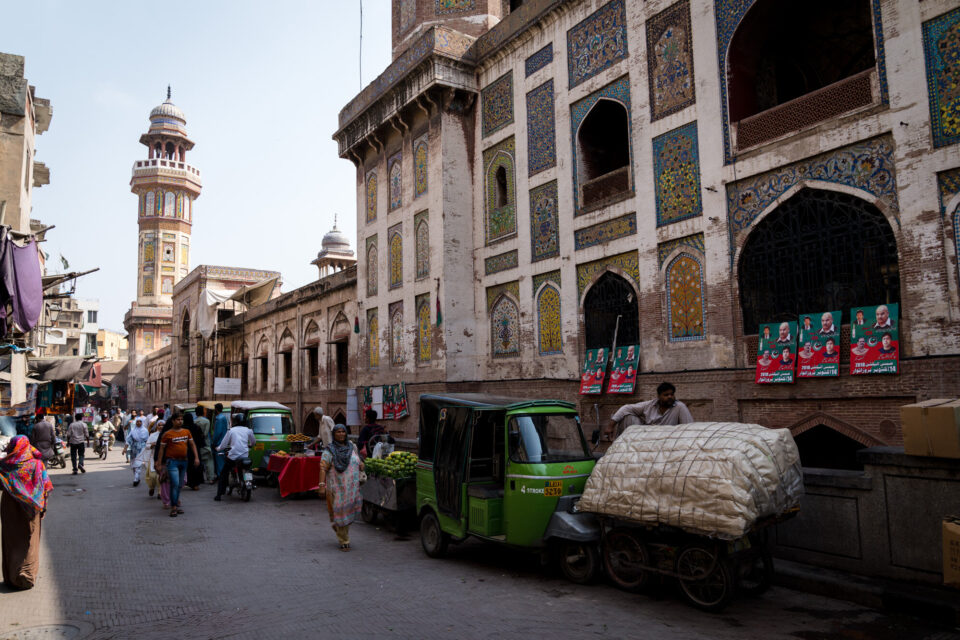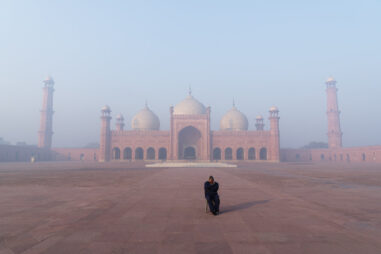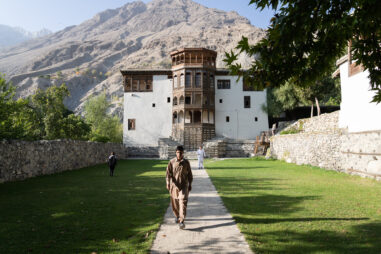
In the heart of the Walled City of Lahore, lies the ornately decorated Wazir Khan Mosque. It was built between 1634 and 1641 by Hakim Wazir Khan, the Subedar of Lahore, during the reign of the Mughal Emperor Shah Jahan.
Its surfaces are almost entirely covered with elaborate frescoes and tile mosaics. Sadly, most are in a state of disrepair. However, the mosque is being painstakingly restored by the Aga Khan Trust for Culture and the Government of Punjab, with contributions from the governments of Germany, Norway, and the United States.
When the mosque was constructed, a row of arches along its front facade and a small bazaar just inside the entrance were included and reserved for calligraphers and bookbinders. Revenues from these businesses served as an endowment for the upkeep of the mosque.
However, as competition for urban space intensified over the years, the city began to push up against the sides of the mosque covering and burying some of the exterior. The first stage of restoration in 2009 aimed to undo the damage caused by this encroachment by creating a courtyard in front of the mosque allowing it some breathing space and restoring the original arches. The plan is for these to host local artisans businesses in time. Structural work on the foundations also took place.
The next stage will see the restoration of the intricate frescos and tile mosaics that embellish much of the building’s surface as well as some additional structural work. Inside the courtyard, a master tile maker and his apprentice – his son – were already creating some of the individual pieces of tile mosaic that will be used to restore the exterior (see below photos). An enormous mosque before them, they have their work cut out for them. Despite the scale of the task ahead of them, the father expressed his happiness. He was, in his words, ‘working for the glory of God.’
